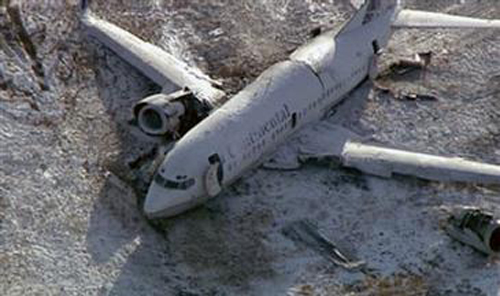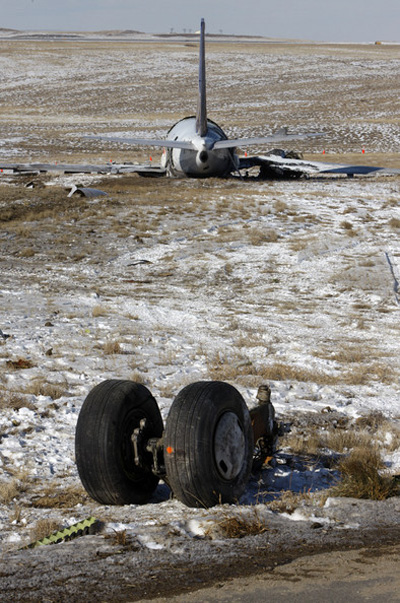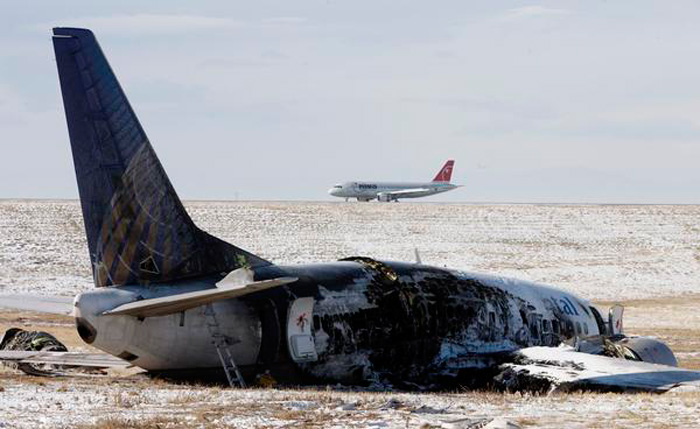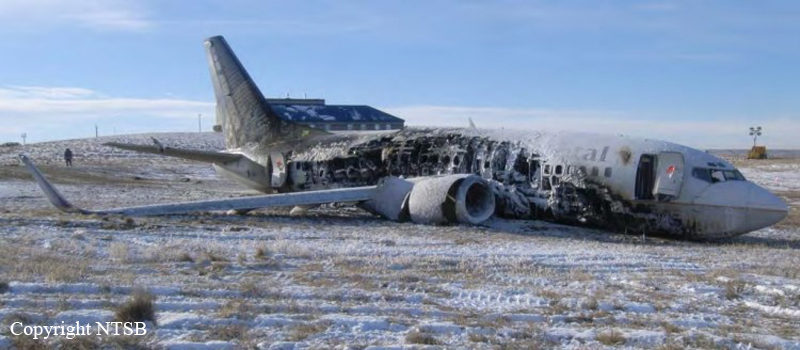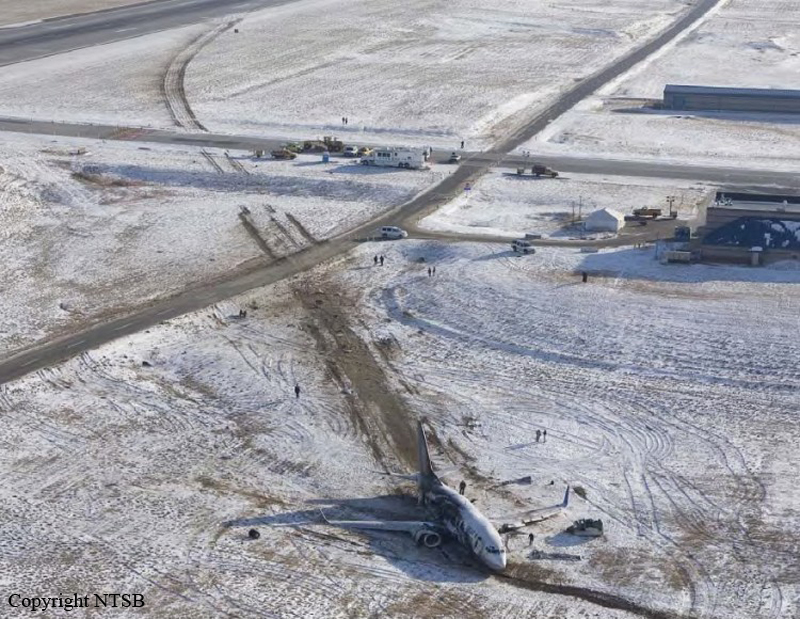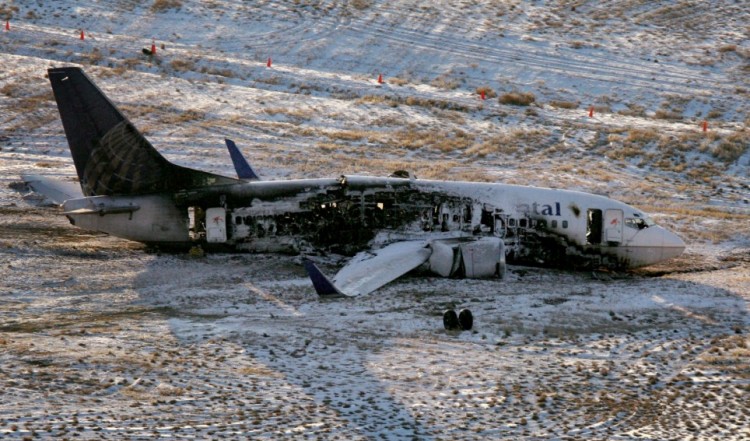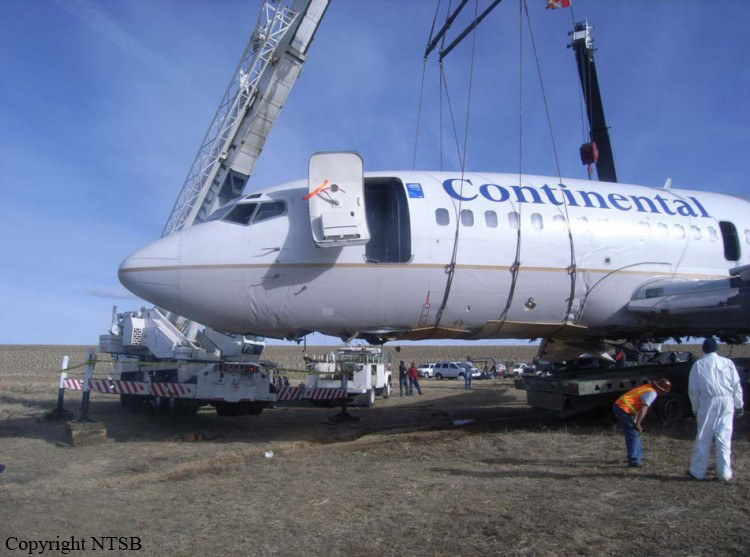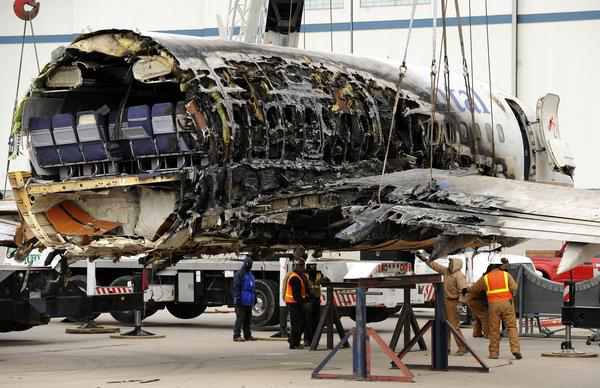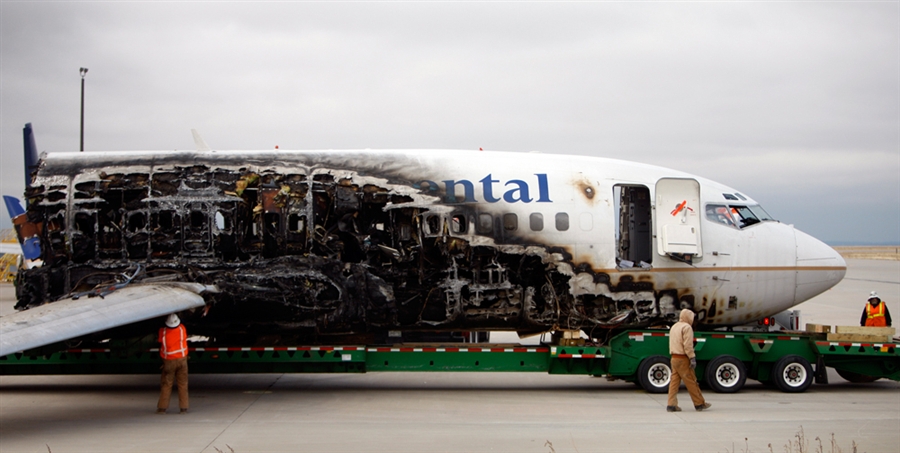Country
Crash of a Boeing 737-524 in Denver
Date & Time:
Dec 20, 2008 at 1818 LT
Registration:
N18611
Survivors:
Yes
Schedule:
Denver - Houston
MSN:
27324/2621
YOM:
1994
Flight number:
CO1404
Crew on board:
5
Crew fatalities:
Pax on board:
110
Pax fatalities:
Other fatalities:
Total fatalities:
0
Captain / Total hours on type:
6300.00
Copilot / Total hours on type:
1500
Aircraft flight hours:
40541
Aircraft flight cycles:
21511
Circumstances:
On December 20, 2008, about 1818 mountain standard time, Continental Airlines flight 1404, a Boeing 737-500, N18611, departed the left side of runway 34R during takeoff from Denver International Airport (DEN), Denver, Colorado. A postcrash fire ensued. The captain and 5 of the 110 passengers were seriously injured; the first officer, 2 cabin crewmembers, and 38 passengers received minor injuries; and 1 cabin crewmember and 67 passengers (3 of whom were lap-held children) were uninjured. The airplane was substantially damaged. The scheduled, domestic passenger flight, operated under the provisions of 14 Code of Federal Regulations Part 121, was departing DEN and was destined for George Bush Intercontinental Airport, Houston, Texas. At the time of the accident, visual meteorological conditions prevailed, with strong and gusty winds out of the west. The flight operated on an instrument flight rules flight plan.
Probable cause:
The captain’s cessation of right rudder input, which was needed to maintain directional control of the airplane, about 4 seconds before the excursion, when the airplane encountered a strong and gusty crosswind that exceeded the captain’s training and experience.
Contributing to the accident were the following factors:
1) an air traffic control system that did not require or facilitate the dissemination of key, available wind information to the air traffic controllers and pilots; and
2) inadequate crosswind training in the airline industry due to deficient simulator wind gust modeling.
Contributing to the accident were the following factors:
1) an air traffic control system that did not require or facilitate the dissemination of key, available wind information to the air traffic controllers and pilots; and
2) inadequate crosswind training in the airline industry due to deficient simulator wind gust modeling.
Final Report:

